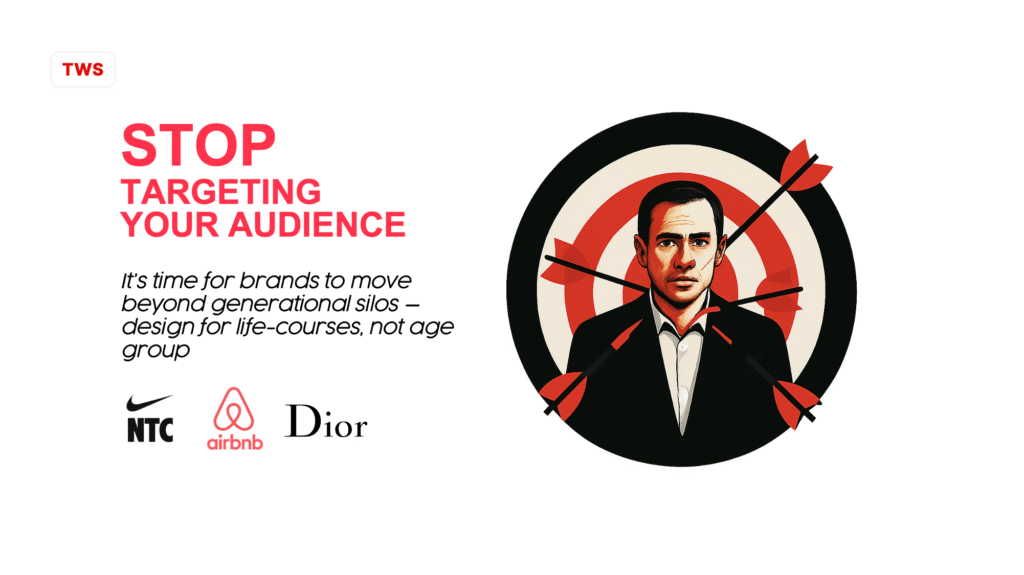
Time to Stop Targeting Your Audience
For decades, marketing has been obsessed with one weapon: targeting.
Boomers. Gen X. Millennials. Gen Z. Each generation packaged into neat cohorts with assumptions about music taste, tech adoption, career stage, spending power, and even humor. Campaign briefs read like sniper manuals: define the age, aim, shoot.
But here’s the problem: people don’t live in straight lines anymore.
Longevity, population aging, economic reinvention, and nonlinear careers have made age a useless predictor of need. A 67-year-old startup founder, a 55-year-old caregiver, and a 72-year-old retiree-turned-consultant have radically different behaviors and aspirations — though they all fall into the “50+” bucket.
The truth is, audience is not your enemy. You don’t need to hunt them down. You need to design with them.
It’s time to move from Generational Targeting → Life-Course Design.
For example

Nike Training Club (NTC)
Old way (Generational Targeting):
Initially Nike’s campaigns often split by “youth athletes” vs “older athletes” — assuming age defined motivation.
Life-Course Design shift:
Nike Training Club app is built not for Gen Z or Millennials, but for phases of life:
- New mothers returning to fitness (postpartum programs).
- Mid-career professionals juggling time (10-min high-intensity workouts).
- Seniors staying mobile (low-impact routines).
Framework in action (Nike NTC):
- Phase: Life context (postpartum, busy job, aging joints).
- Priority: Regain strength, save time, avoid injury.
- Pattern: Short bursts vs. structured plans.
- Partnership: Peer challenges, coaches, community trainers.
👉 Same app, different life-course journeys. Nike markets it as “sport is for every body”, not “for Gen Z only.”

Airbnb
Old way: Early positioning was “cheap stays for Millennials traveling on budget.”
Life-Course Design shift:
Airbnb redesigned its platform around life stages, not age groups:
- Digital nomads (people of any age working remotely).
- Families with kids (longer stays, kitchens, flexible homes).
- Retirees traveling slow (monthly discounts, community hosts).
👉 A 27-year-old freelancer and a 67-year-old retiree might both book “long stays” — different ages, same life-course pattern.silos.
From age as decline to age as reinvention in marketing
Too often, marketing frames aging as a loss of youth, beauty, or relevance. This narrative is not only inaccurate but also commercially self-defeating. Slogans like “erase fine lines and wrinkles” and descriptors like “age-defying” can make older adults feel as if there’s no point for them to purchase products. For example, Dior’s “Capture Youth” campaign in 2017 featured 25-year-old Cara Delevingne promoting anti-aging products, drawing widespread criticism for reinforcing ageist ideals by using a model decades younger than the target audience.
Instead, marketing leaders should:
- Showcase ambition, vitality, and reinvention at every age.
- Normalize longevity, not as an exception, but as the new standard.
- Feature age-diverse brand ambassadors across product lines.